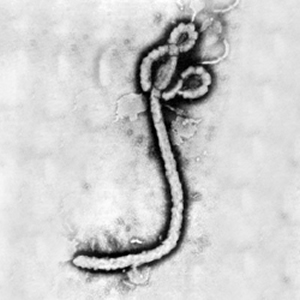The Acquisition, Metabolism, and Pathological Mechanisms Underlying Giardia Lamblia: Difference between revisions
Slevenso3268 (talk | contribs) (Created page with "{{Uncurated}} This is the leader section -- here you can write a short description of your topic and why it is interesting. The goal is for this to quickly cover the main idea...") |
Slevenso3268 (talk | contribs) No edit summary |
||
| Line 1: | Line 1: | ||
{{Uncurated}} | {{Uncurated}} | ||
Giardia lamblia is a flagellated protozoan parasite that settles in the small intestine, causing giardiasis. Antonie van Leeuwenhoek, who examined samples of his own diarrheal stool, first documented the trophozoite form of G. lamblia in 1681. Giardia is confined to the lumen of the small intestine, and does not spread through the bloodstream. The main route to infection is ingestion of untreated sewage and contaminated natural waters. It is not only found in humans, but is the most common parasite to infect other animals as well including cats, dogs, birds, cattle, and sheep. | |||
G. lamblia is a flagellated unicellular eukaryotic microorganism that has two major life cycle stages. The cyst that is ingested is inert, which allows it to survive in many different kinds of environmental conditions. However after contact with the acidic environment in the stomach, the cyst will excyst into trophozoites inside of the small intestine. The trophozoites are able to form cysts in the jejunum after being exposed to the biliary fluid, which allows transmission of the cyst. | |||
Researchers have discovered fascinating information about giardia. They have found that giardia can induce apoptosis and disrupt the barrier function in small intestine. G. lamblia also undergoes process that allows the parasite to develop chronic and recurrent infections called antigenic variation, which evades the immune system of the host. G. lamblia also has a very interesting metabolic process. It has little biosynthetic capacity. It lacks mitochondria and its oxidative phosphorylation is not mediated by the cytochrome. As well, it is able to carry out aerobic and anaerobic respiration depending on the amount of oxygen in the environment. Acquisition and metabolism of G. lamblia contribute to the pathological mechanisms, and how it is able to cause such an unpleasant disease without actually penetrating the epithelium. | |||
==Section 1== | ==Section 1== | ||
Revision as of 08:09, 11 March 2015
Giardia lamblia is a flagellated protozoan parasite that settles in the small intestine, causing giardiasis. Antonie van Leeuwenhoek, who examined samples of his own diarrheal stool, first documented the trophozoite form of G. lamblia in 1681. Giardia is confined to the lumen of the small intestine, and does not spread through the bloodstream. The main route to infection is ingestion of untreated sewage and contaminated natural waters. It is not only found in humans, but is the most common parasite to infect other animals as well including cats, dogs, birds, cattle, and sheep.
G. lamblia is a flagellated unicellular eukaryotic microorganism that has two major life cycle stages. The cyst that is ingested is inert, which allows it to survive in many different kinds of environmental conditions. However after contact with the acidic environment in the stomach, the cyst will excyst into trophozoites inside of the small intestine. The trophozoites are able to form cysts in the jejunum after being exposed to the biliary fluid, which allows transmission of the cyst.
Researchers have discovered fascinating information about giardia. They have found that giardia can induce apoptosis and disrupt the barrier function in small intestine. G. lamblia also undergoes process that allows the parasite to develop chronic and recurrent infections called antigenic variation, which evades the immune system of the host. G. lamblia also has a very interesting metabolic process. It has little biosynthetic capacity. It lacks mitochondria and its oxidative phosphorylation is not mediated by the cytochrome. As well, it is able to carry out aerobic and anaerobic respiration depending on the amount of oxygen in the environment. Acquisition and metabolism of G. lamblia contribute to the pathological mechanisms, and how it is able to cause such an unpleasant disease without actually penetrating the epithelium.
Section 1
At right is a sample image insertion. It works for any image uploaded anywhere to MicrobeWiki. The insertion code consists of:
Double brackets: [[
Filename: Ebola virus 1.jpeg
Thumbnail status: |thumb|
Pixel size: |300px|
Placement on page: |right|
Legend/credit: Electron micrograph of the Ebola Zaire virus. This was the first photo ever taken of the virus, on 10/13/1976. By Dr. F.A. Murphy, now at U.C. Davis, then at the CDC.
Closed double brackets: ]]
Other examples:
Bold
Italic
Subscript: H2O
Superscript: Fe3+
Overall paper length should be 3,000 words, with at least 3 figures with data.
Pathomechanisms
Epithelial Barrier Dysfunction
G. lamblia is able to cause disease without penetrating the epithelium, invading tissues, or entering the bloodstream. (http://www.ncbi.nlm.nih.gov/pmc/articles/PMC1856818/)
Some patients have with chronic giardiasis have been found to have epithelial barrier dysfunction, which down regulates the tight junction protein claudin 1 (wikilink) and increases epithelial apoptosis (wikilink). This causes failure of sodium-dependent glucose absorption, which results in active chloride ion secretion. Water then enters the lumen (wikilink) and causes diarrhea. (http://www.ncbi.nlm.nih.gov/pmc/articles/PMC1856804/)
Section 3
Further Reading
[Sample link] Ebola Hemorrhagic Fever—Centers for Disease Control and Prevention, Special Pathogens Branch
References
Edited by (your name here), a student of Nora Sullivan in BIOL168L (Microbiology) in The Keck Science Department of the Claremont Colleges Spring 2014.

